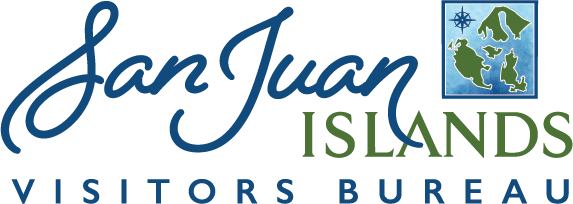
You've probably heard about the beauty of Washington's Mount Rainier National Park, and the stunning vistas in North Cascades National Park and Olympic National Park. But did you know there is a National Historical Park on San Juan Island? One of Washington State's 15 national parks, the San Juan Islands National Historical Park is a hidden gem that offers fascinating history spanning 150 years - including 50 years as a National Park - with views of serene sunsets, access to a historic lighthouse, and world-class hiking.
The San Juan Islands Historical Park is a collection of sites, including the two main 18th-century military camps - American Camp and English Camp - that played an important part in both United States and world history. As early as 1845, the Hudson's Bay Company based at Fort Victoria, just 7 miles across the Haro Strait, claimed San Juan Island as an English outpost. By 1851 the company established salmon-curing stations along the island's western shoreline. By 1853, the islands were also claimed as U.S. possessions in the newly created Washington Territory, creating a state of limbo that lasted almost 20 years. The dispute came to a head on on June 15, 1859, when Lyman Cutlar, an American, shot and killed an English Hudson's Bay Company pig rooting in his garden. For the next 12 years, the bloodless "Pig War" standoff kept the islands on guard, until the border was finally decided in 1872 by decree of Kaiser Wilhelm I of Germany, who placed the border in the Haro Strait, adding the San Juan Islands to America's territory.
Now, several sites in the original American Camp, on the southwest side of the island, and English Camp on the north side, offer a multitude of learning opportunities, fun activities and outdoor adventure. Find out more about the park's fascinating history.
Below, top left: Historic American Camp Officer's Quarters from the late 1800s and Officer's Quarters restored (top right) ; English Camp from above with the formal gardens and view of the HMS Boxer (bottom left); restored English Camp (bottom right) .
Like most national parks, the San Juan Islands Historical Park is a beautiful place, but here, the Salish Sea meets rocky shores just steps from lush forests, so you can hike, bike and explore many different landscapes - all with a touch of history.
If you're a history buff, this is the place to be. American Camp's Visitor Center gathers artifacts found at the old camps - glass bottles, arrowheads, bullets, medals and more - into a fascinating exhibit telling the history of the area. In recent summers, there have been a nesting pair of eagles nearby, with a telescope set up outside the visitor center for viewing. Follow the 6-mile Town to American Camp Trail that connects Friday Harbor to the Visitor Center.
South Beach in American Camp National Historical Park is the longest public beach in the islands, with views over the Strait of Juan de Fuca to the Olympic Mountains. All along this pristine two-mile pebble-and-sand beach, a wide swath of massive driftwood has washed up and been bleached in the sun for decades. A wonderful place to take photos, enjoy a brisk walk for exercise, or a slow stroll for beachcombing, South Beach also has broad golden hills where eagles and hawks reel, rabbits forage and red foxes hunt at sunset, a historic “redoubt” or temporary fortification made during the Pig War conflict between the American and English troops from 1859 to 1871 – a standoff during which no shots were fired. Now, the only flames you’ll see are the summer bonfires at sunset as locals and visitors gather to enjoy this stunning and special place.
The original site San Juan Village was located near what is now 4th of July Beach. The "Old Town Lagoon Beach Walk" heads south along the shoreline passed the saltwater lagoon. There are no vestiges remaining of the original village, which was the San Juan Islands' first non-Native American community, but you can see the location. The village burned down in the early 1890s and was abandoned for the new town of Friday Harbor, which grew quickly into a fishing port.
George Jakle was the first caretaker of the Cattle Point Lighthouse, and was a soldier stationed at American Camp. In 1888, the lighthouse was just a brass lens lantern on post, lit by kerosene, which some historians think was supplied by boat to Jakle's at nearby 4th of July Beach. You can hike a three-mile loop through old logging roads in the woods to beaches along both the east and west sides of the park.
In July, hundreds of history buffs go back in time at English Camp's Annual Encampment. Military and cultural re-enactors show how people lived and worked in the islands in the 18th Century. It is a great chance for kids - and adults - to learn island history and talk to interesting people. Watch demonstrations of music, blacksmithing, spinning and weaving, sewing, cooperage and carpentry, along with the pageantry of period uniforms in scarlet and blue. Black powder rifled musket demonstrations and the firing of howitzer also are planned both days.
There are also ongoing history and nature walks lead by historians and naturalists. In recent years, conservation efforts have been made to preserve the park's natural beauty, especially efforts to bring back the beautiful green-and-white Island Marble Butterfly, thought to be extinct since 1908. It was rediscovered in 1998, and scientists are working at American Camp park to protect and develop the butterfly's habitat, including native and non-native mustards where the Island Marble lays its eggs.